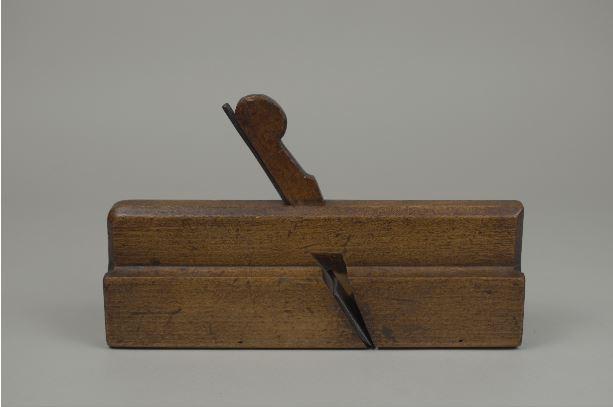
L: 24.1cm W: 3.3cm H: 14.6cm
a- L: 24.1cm W: 3.3cm H: 8.3cm
b- L: 15.4cm W: 2.4cm H: 0.9cm
c- L: 16.3cm W: 2.6cm H: 0.3cm
A wooden hollow molding plane consisting of 3 parts.
a- The body is rectangular and made of a brown hardwood. A cheek protrudes from the bottom half of the front body. The throat cuts diagonally through the body at a steep angle just right of centre. The sole is curved convexly along the length to match the cutting iron. The bottom edge of the back body is chamfered to meet the sole. Stamps on the toe read: "DYSON/YORK"; "T. BOSWORTH"; "I BLOWER"; "(I)GG" (overstamped); "B"; "M"; "(E. BEXON)?" (overstamped); "(C. COOPER)?" (overstamped). Stamps on the heel read: "E. BEXON"; "I BLOWER"; "14".
b- The wedge is made of a similar hardwood to the body. It tapers to a point on one end and is rounded on the other. A shallow cut-out below the head allows for easy handling.
c- The iron is a narrow strip of dark grey metal. It abruptly widens near the cutting edge. The cutting edge is curved convexly. The width of the cut is 1".
Hollow molding planes are extremely versatile. They are used to cut concave grooves in any portion of a workpiece. Used alone or in conjunction with other planes, hollow molding planes allow workers to create or adjust any conceivable form.
